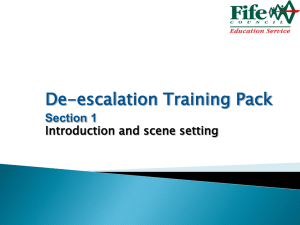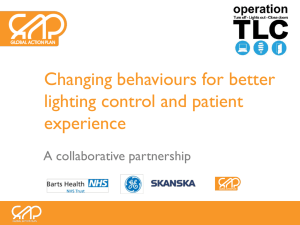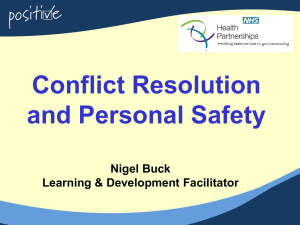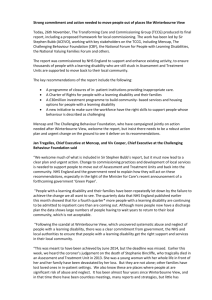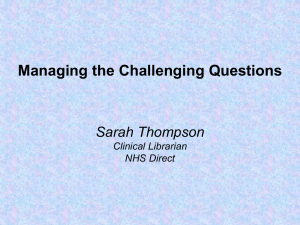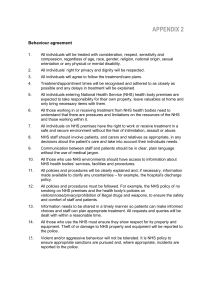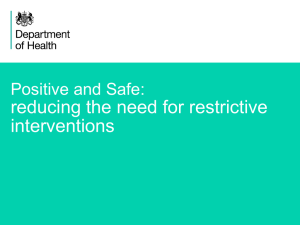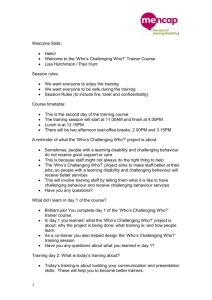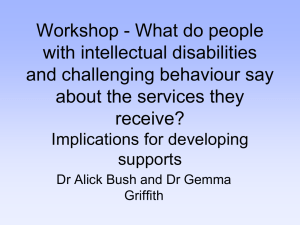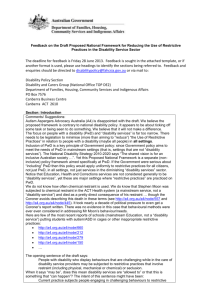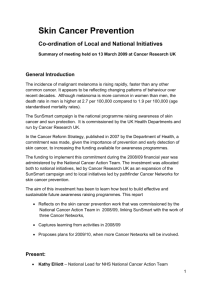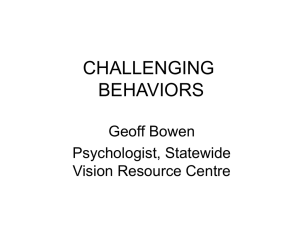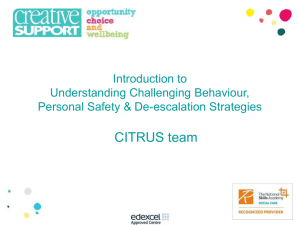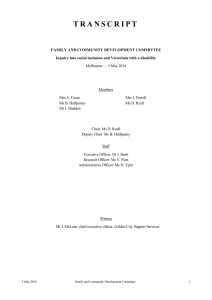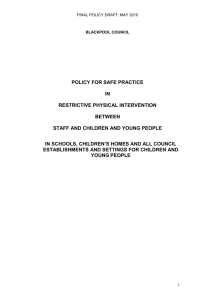Meeting needs and reducing distress
advertisement
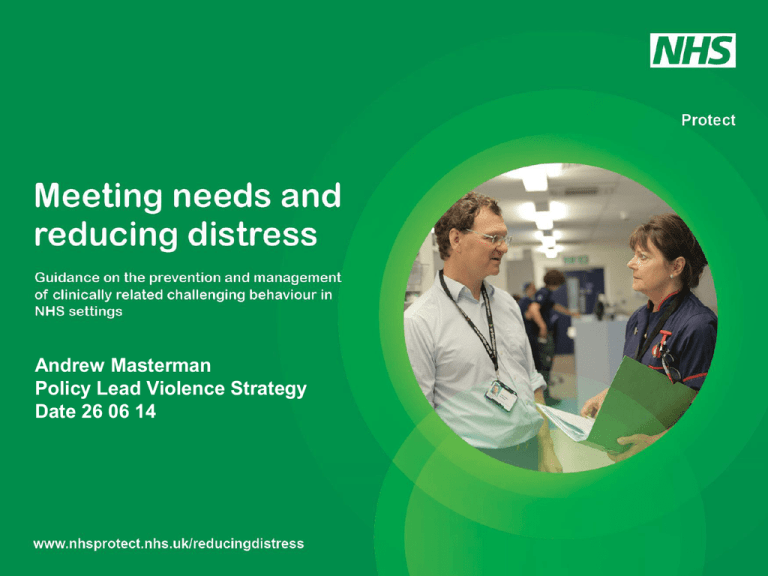
Andrew Masterman Policy Lead Violence Strategy Date 26 06 14 www.nhsprotect.nhs.uk Collaborative approach Timeline Zero Tolerance 2000 NHS SMS 2004 NHS Protect 2011 Winter bourne / Mid Staffs 2012 MIND Meeting Needs 2013 DH guidance 2014 National picture Minimising the use of physical restraint MH Crisis Care Concordat DH Positive & Safe Programme RCN - Positive and Proactive Care NHS Protect Meeting Needs and Reducing Distress SfHealth/Care Positive and Proactive Workforce MoJ - Death in Custody principles / NHS Care in Custody NICE - Guidelines • Violence & Aggression • LD Challenging Behaviour NHS England NRLS and Patient Safety Incidents RCN Forum Research RCPsych CQC Health Education England Why is this guidance important? • Vulnerable patients • Other patients • Staff • Relatives and carers • Organisational reputation Our approach Preventing challenging behaviour and minimising restrictive practices… Intervene Manage Prevent Understand Understand • What is meant by clinically related challenging behaviour • Clinical condition or other factors • How it presents and early signs • Antecedents and triggers • Common reasons - physical, cognitive, psychological/emotional, environmental/social • Translate unmet needs into delivery of care Manage risk • Recognise a person’s vulnerability • Implement strategies to stay safe • Manage escalating situations • Deal with immediate, obvious causes • Consider other strategies, e.g. assistance, observations • Know when to use physical interventions in emergency situations • Review incident Prevent • Recognise individual's rights and dignity • Positive engagement, attitudes, communication critical to prevent challenging behaviour • Information gathering, observation and assessing behaviours when planning care • Plan individualised care: understand what causes behaviour, what alleviates it, what can we do differently; document and share with colleagues • Factors: communication, environment, activities, independence, mobility, sleep, rest and nutrition • Review care plan Training Level Core Module Challenging behaviour awareness Content • Awareness • Recognise • Prevent • Manage risks • Responsibilitie s • Support Audience Role specific Targeted (risk based) CRT Assessment and planning Assault reduction Physical intervention • Risk awareness • Dynamic risk assessment • Communication • Calming • Responsibilities • Reporting • Support • Assess & diagnose • Care planning • Individualised care • Prevention • Special observation • Behaviour management • Problem solving • Recording • Support • Risk awareness • Positioning • Safer practices • Avoiding blows • Releases • Guiding & redirecting • Policy, law, ethics • Appropriate restrictive skills • Medical risks • Duty of care • Teamwork • Leadership • Emergency response Nurses, doctors, AHP Nurses, doctors, AHP in high risk areas Response teams, security function All staff with direct patient contact Resources • Versatile video resource • Supports guidance • Learning outcomes • Relevant to clinical and non-clinical staff • Scenarios to understand, prevent, manage behaviour • Shared expertise and practical advice www.nhsprotect.nhs.uk/reducingdistress The future? • Guidance, website and video resources • Project implementation and evaluation • Future engagement: participate in work streams to minimise restrictive interventions • Identify opportunities for further work • Training CONTACT DETAILS: andrew.masterman@nhsprotect.gsi.gov.uk

